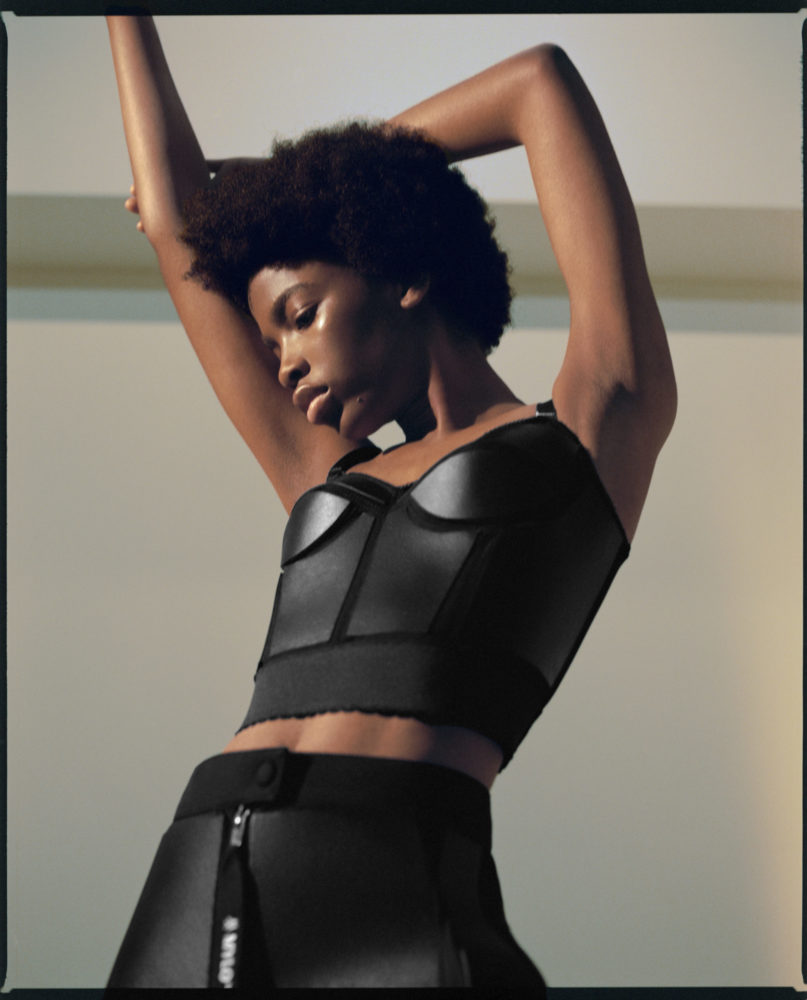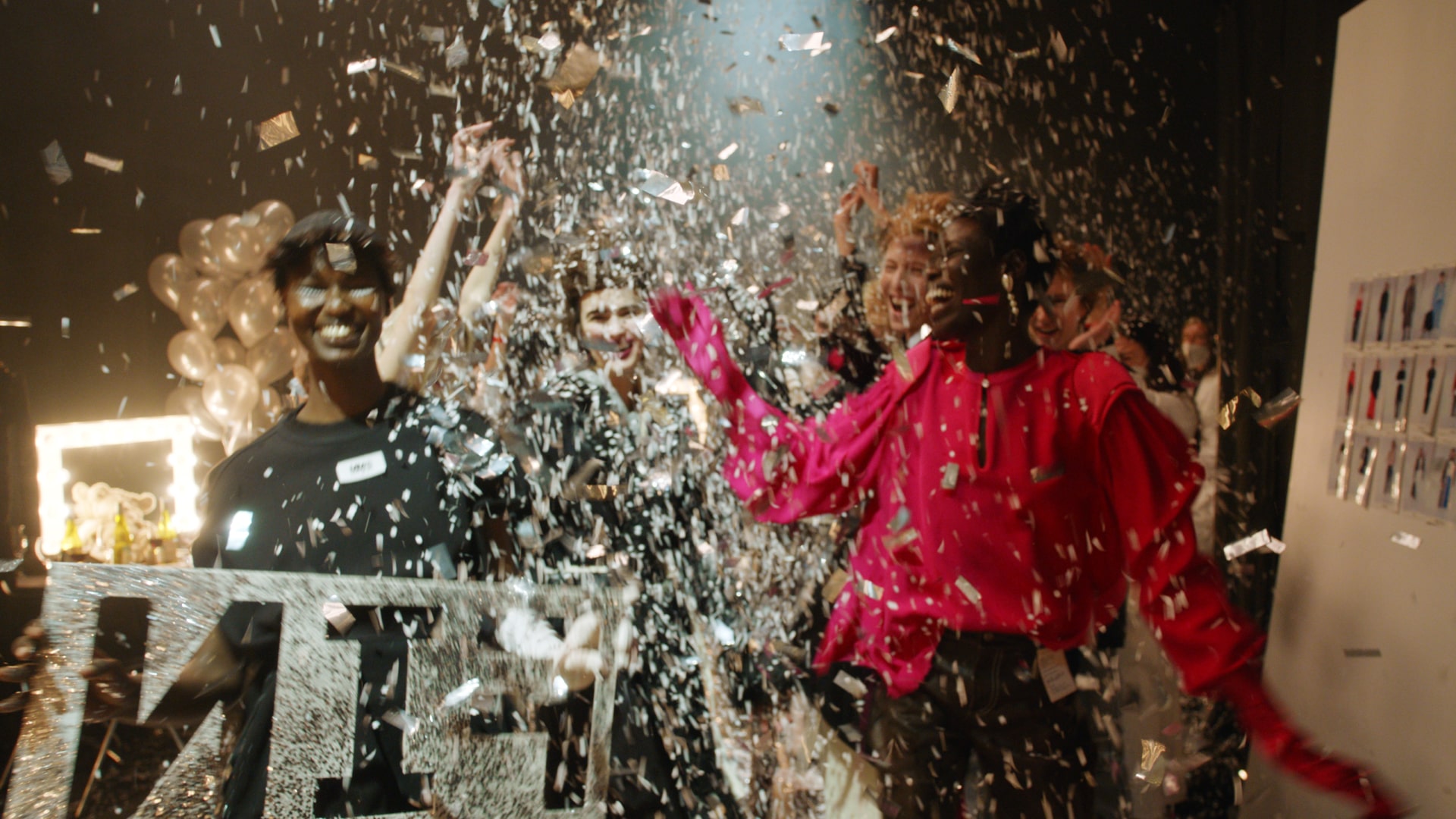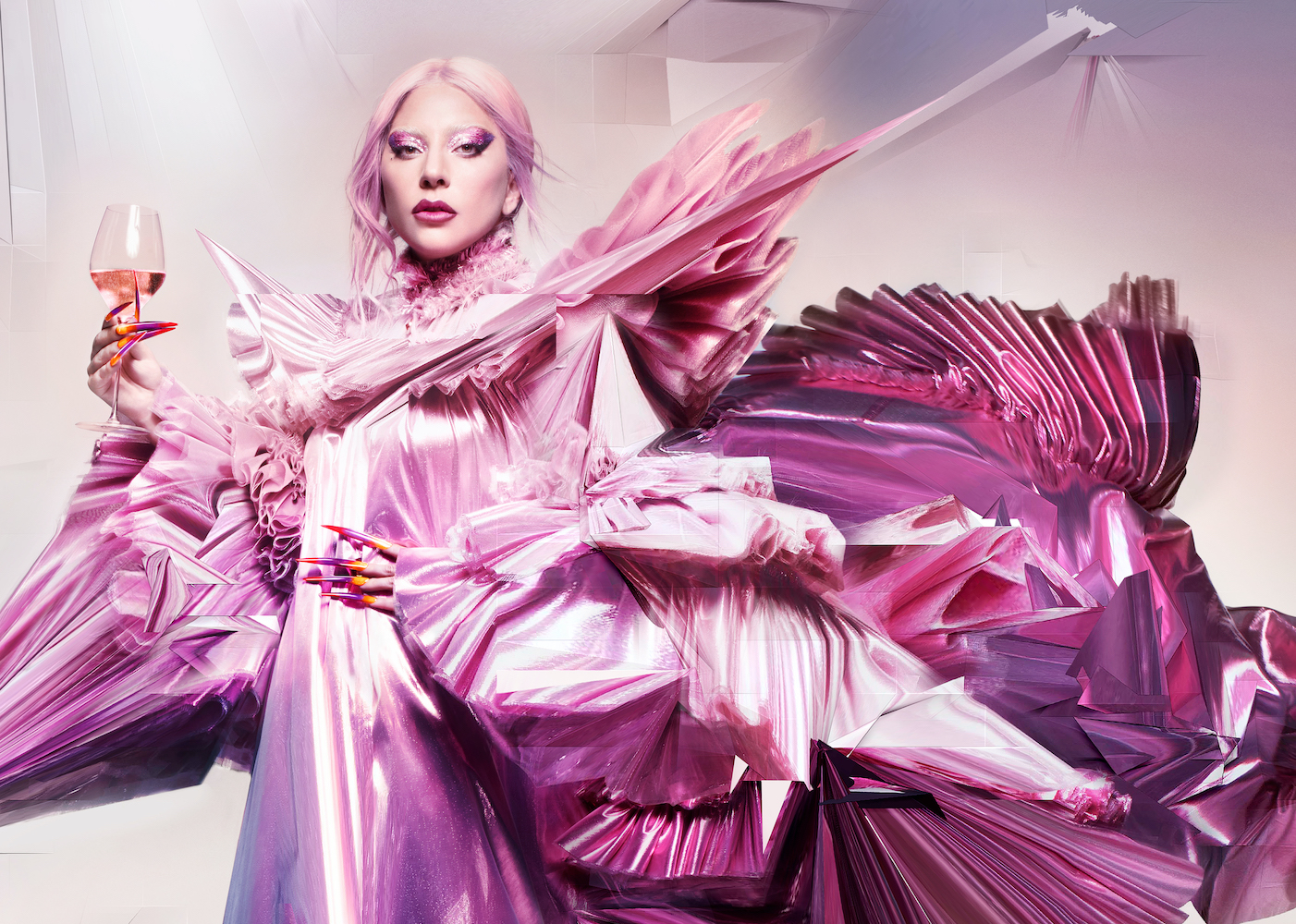The story of the designer Mia Vesper is one of a young creative who ventured to New York City, where her passion, vigilance, and a nudge from the universe led her to realize a dream. While you may have seen the designer’s work in Beyoncé’s Black Is King last year, thoughts of her eponymous label first arose when she designed, from a found vintage tapestry, a single jacket for herself to wear. A few Instagram posts and fateful interactions brought Vesper to the conclusion that she could start her own brand—and so she did.
After a pop-up storefront in Manhattan, which closed its doors in 2019, Vesper’s exuberant designs have become increasingly recognizable for their technicolor tones, funky silhouettes, and a few signature textiles, such as rich, vintage tapestries and a shiny, metallic-flecked take on a plissé fabrication. The designer utilizes vintage and deadstock materials to create unique pieces, as well as sourcing new materials to make vivacious garments that you’ll be dying to wear to the next party on your calendar—like Tiny tops in faux crocodile skin, the unisex Liquid Pink Flare pants, and the ruffled Mothra dress.
To learn about her creative roots, thoughts on sustainability, and more, Whitewall caught up with the designer over the summer.
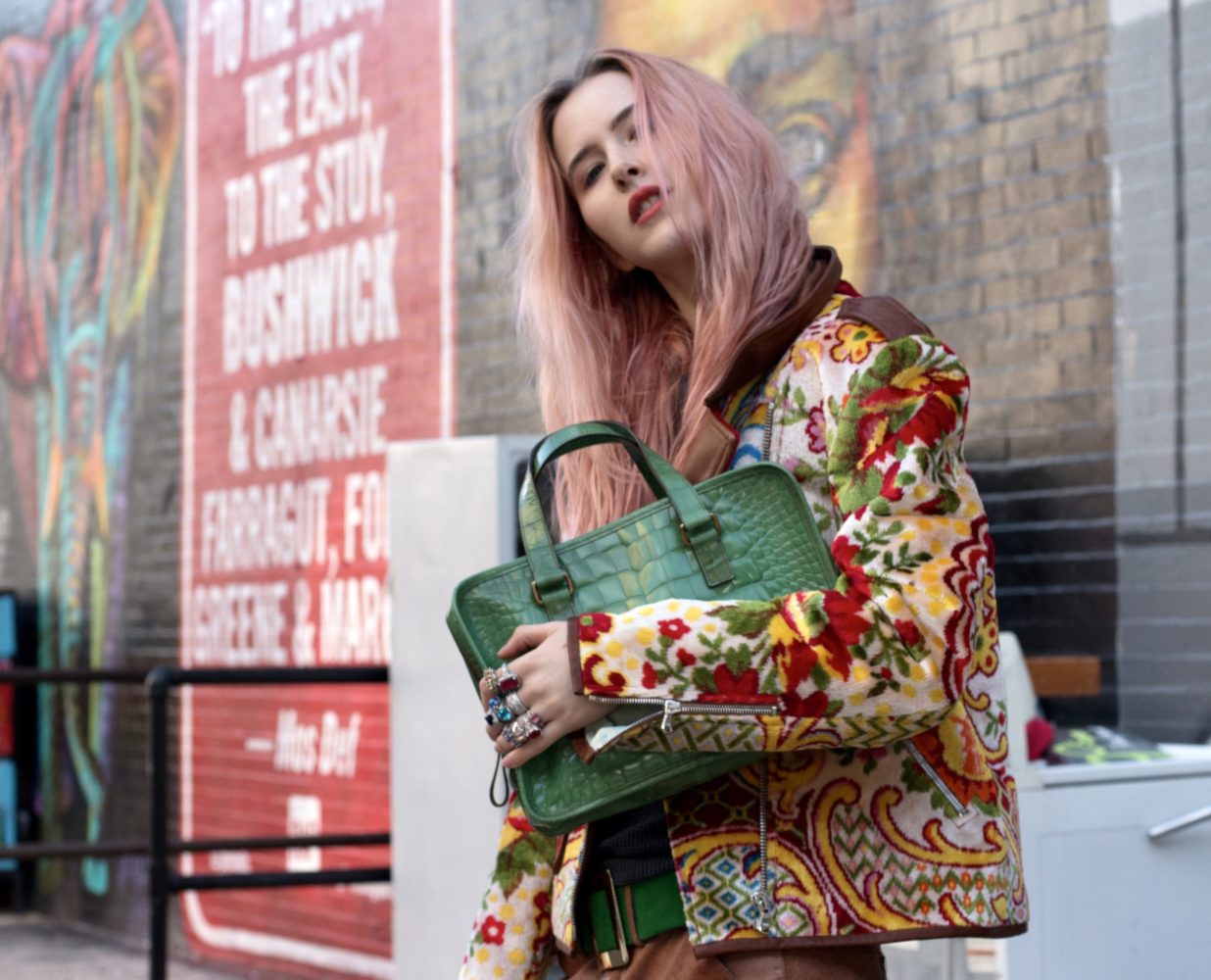
Portrait of Mia Vesper by Jenni Skluth.
WHITEWALL: Let’s take it back a little bit. You commissioned a tailor to create a jacket you designed in 2016, people were interested, and that was, essentially, the beginning for you. What then took this from an interest to a career?
MIA VESPER: I think I just saw somebody who posted something about needing a fashion magazine intern. Her name was Valentina Ilardi Martin, and she had the fashion magazine GREY Magazine. I went over to her house after submitting my pretty much blank application with coffee shop and garden center jobs, but she thought I had cool style, I guess, from my
Instagram presence. She said to “Come over, and we’ll have a test run.”
So I went to her house to intern for the day, and I did not get the job. I was really taken aback and kind of hurt, and she was like, “Well, of course not. You have to do the jacket thing.” So she was really my first inspiration to take it seriously.
My first, “big break,” so to speak, was during fashion week—I got a bunch of friends and models I knew to do this little . . . it wasn’t even a runway. We all got dressed up in tapestry pants and jackets and walked downtown to by where the Marc Jacobs show was. It was very fortunate because we didn’t know this before but they weren’t going to let any press in. We had the entire press corps outside taking pictures, and it was really kismet.
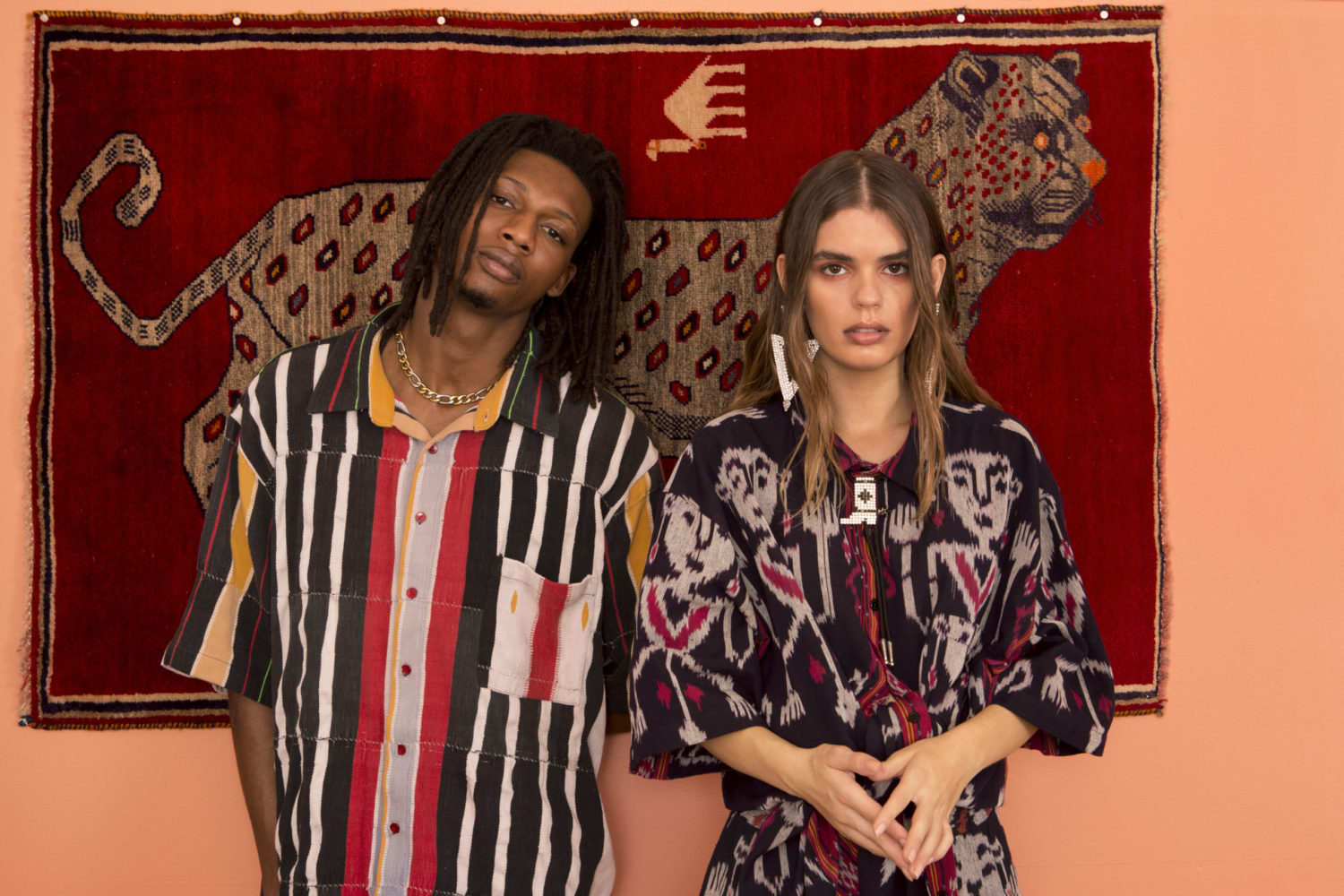
Models PK Holdbrook-Smith and Ombeline Le Mire-Cahn, hair by Vassilis Kokkinidis, makeup by Jas Doyle, photo by Ola Wilk, courtesy of Mia Vesper.
WW: What was the experience like, seeing your work in Beyoncé’s Black Is King?
MV: It was, obviously, an amazing moment. The video was so unbelievably done. From a sociopolitical standpoint it was revolutionary, and also from a stylistic standpoint—revolutionary. It was a huge, huge deal for a brand of my size to be featured in something like that.
She had requested the piece over, maybe, a year or more before the video dropped. I didn’t know what the video was, and we only had, like, a week to make the look. At the time I was also working retail every day in my own store, so we were working the shop during the day and then, at night, sewing all these pieces.
I had really been struggling to keep the brand alive over quarantine, and that was a really good opportunity for me to just make one huge push and hope that something good was going to come out of it, and it did, thankfully.
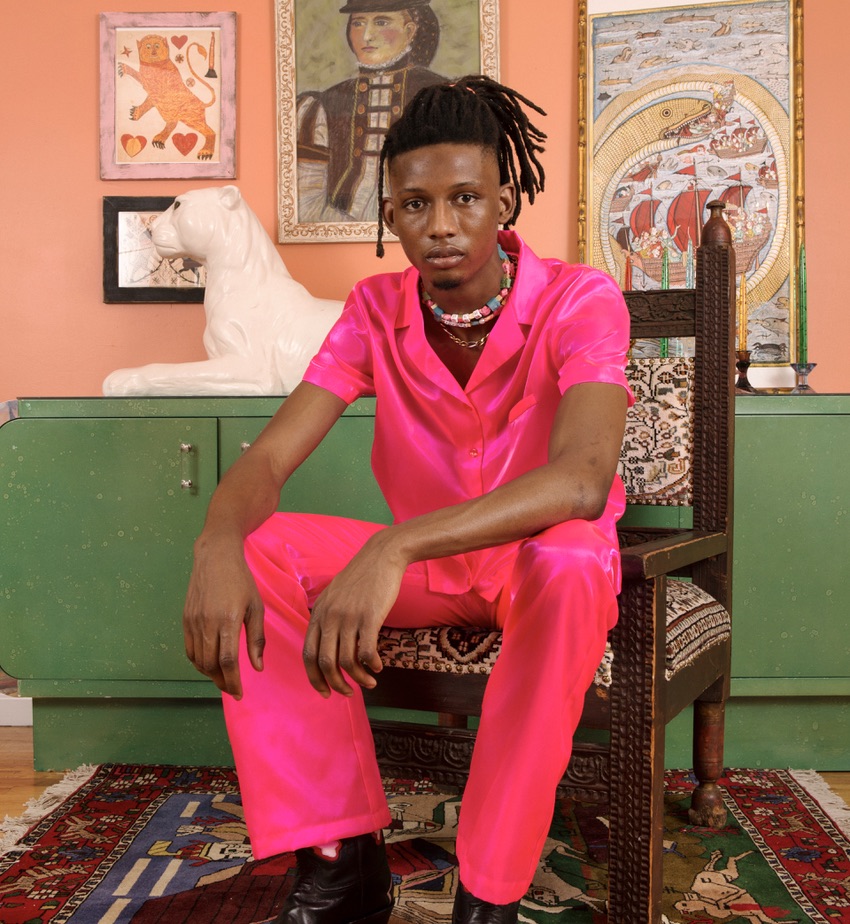
Model PK Holdbrook-Smith, hair by Vassilis Kokkinidis, makeup by Jas Doyle, photo by Ola Wilk, courtesy of Mia Vesper.
WW: You’ve shared that thrifting and antiquing was a favorite pastime with your mother, and your grandmother was a costume designer at the Milwaukee Ballet—so you grew up around fashion. Is there any outfit from your childhood memories that you still think of today?
MV: I can think of one. So, my mom was a really exuberant dresser as well, and I really hated that fact when I was like 11 or 12. I went to a very preppy and wealthy middle school at that time in my life, where every single person had Abercrombie and Fitch and Juicy Couture. I definitely
did not fit in in my vintage wool Cactus vest and spurred cowboy boots type of stuff, so I had retired those and tried to conform.
My mom came to career day one time, wearing this Mongolian lamb three-piece suit. It had a jacket, pants, and vest that were all curly and spotted. She was also filling in for another parent, so I was totally taken by surprise that she was there at school that day. I heard from another student that my mom was there, wearing a “cat pelt” for a suit. I was so angry [laughs] and she obviously didn’t get the problem.
WW: Given that textiles are a big focus for you, does your process usually begin with the fabric? What are some of your favorites to work with?
MV: I definitely start with textile first, usually—just because I want every piece of the garment to be special, and if you start with a special textile you’re already on a fruitful path. I don’t think you really know what you’re going to make until you start to play with the fabric.
Every textile performs so differently, and as someone who wasn’t classically trained in design, I need to get a feel for my fabrics before I start making things so I can understand what’s possible and what’s not.
Now, my favorites are the vintage velvet tapestries that are usually from Italy, circa 1960. Another that’s one of my favorites is this cotton, hand-loomed serape fabric. Those are actually not vintage—I get them made it Mexico by weavers. And then there’s also my classic staple, which is plissé.
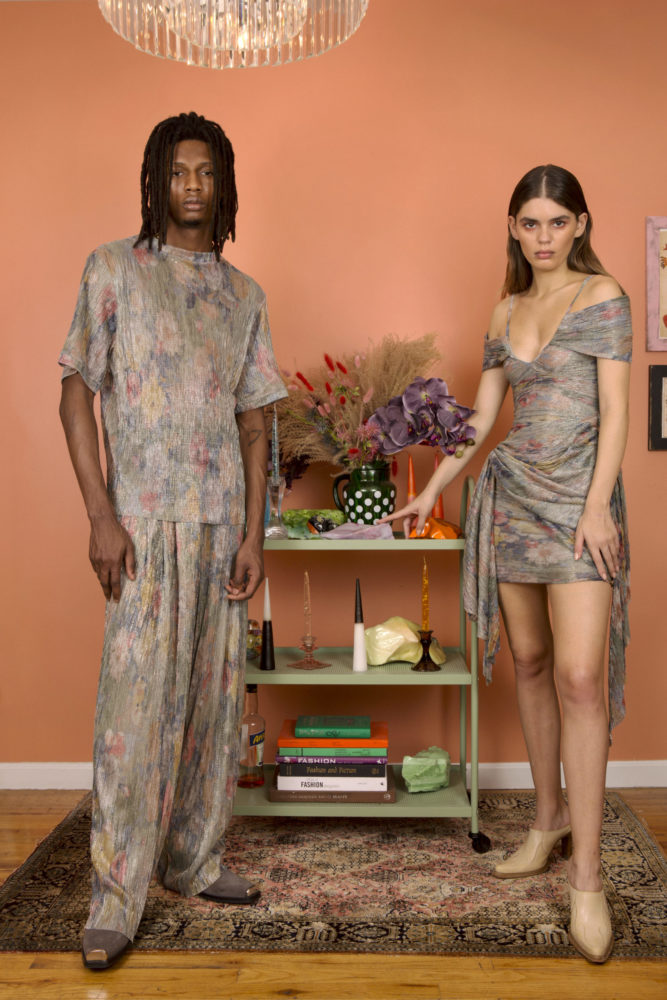
Models PK Holdbrook-Smith and Ombeline Le Mire-Cahn, hair by Vassilis Kokkinidis, makeup by Jas Doyle, photo by Ola Wilk, courtesy of Mia Vesper.
WW: Obviously, just by using a lot of vintage materials and creating small-batch products, you’re thinking about sustainability. But what’s the next step for you in this area?
MV: Sustainability is such a tricky question for everyone, I think. You have to decide what’s important for you. For me, those variables can change.
For instance, right now I’m electing not to wholesale, so my distribution is very small. Many of my items are made-to-order—they’re all made in New York City—but I do use new fabric technology on many of my ready-to-wear items. Those things aren’t “green,” [but] I would say they’re sustainable, if that makes sense.
It’s really an opportunity/cost equation for me. I say to myself, “Okay, is this item special enough to exist?” If it is, I feel like I can greenlight myself to go ahead with making it. But I think those variables could well change as I keep going.
The only way to be sustainable, in my book, is to deal in vintage and thrift, but obviously we’re makers, so that’s antithetical to the whole question.
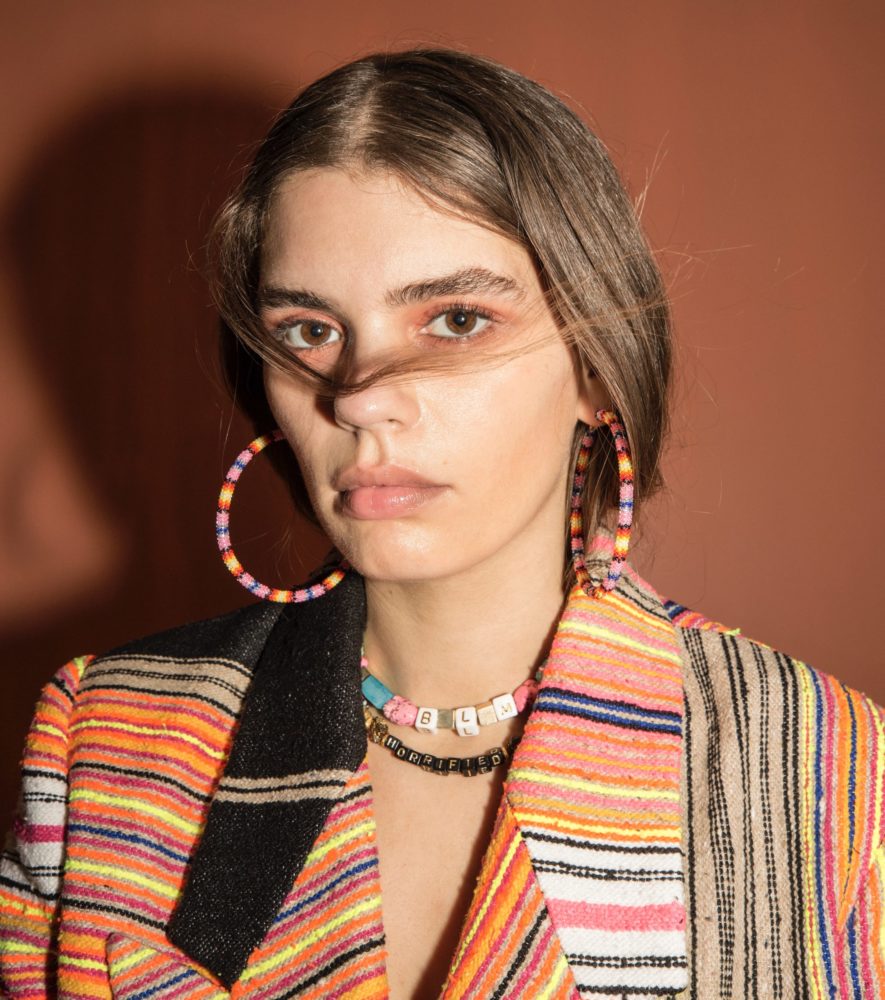
Model Ombeline Le Mire-Cahn, hair by Vassilis Kokkinidis, makeup by Jas Doyle, photo by Ola Wilk, courtesy of Mia Vesper.




